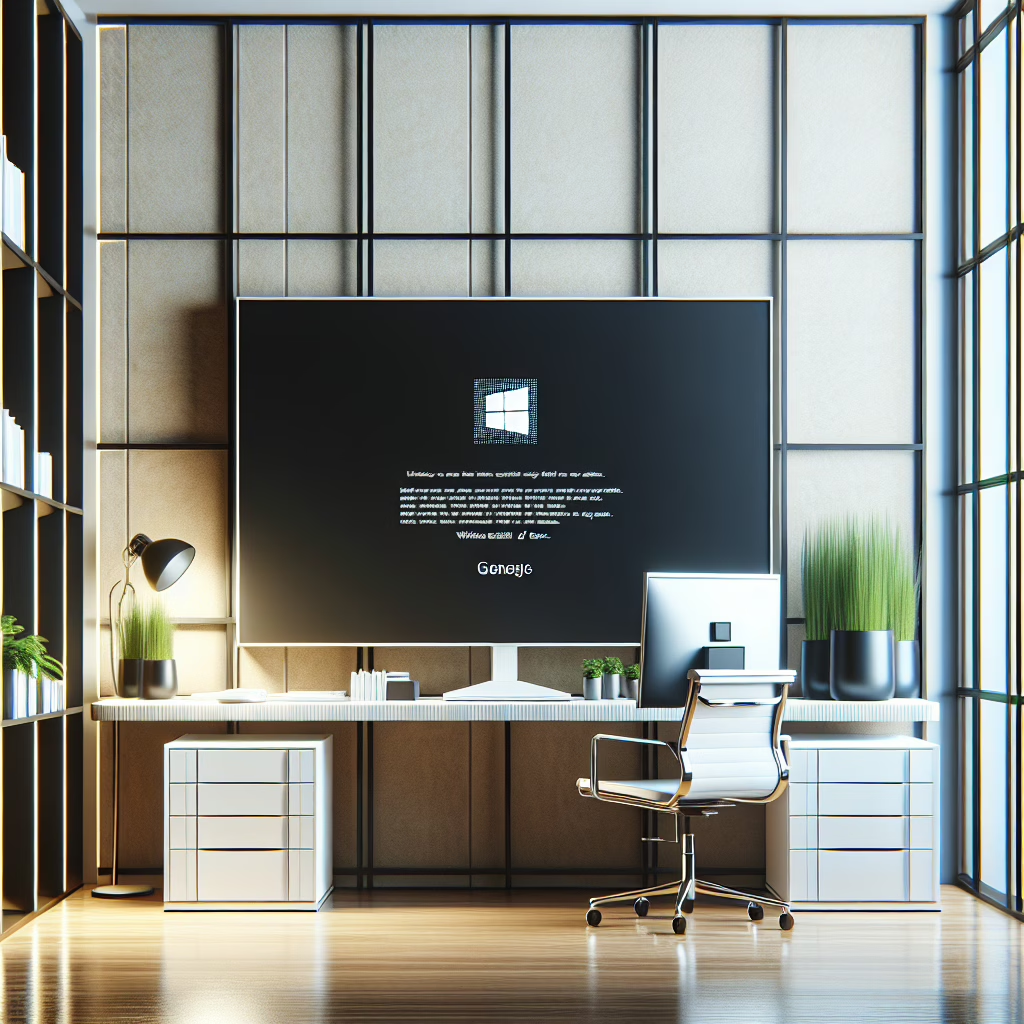Ah, the infamous Windows Blue Screen of Death (BSOD). It’s like that unexpected guest at a party who shows up uninvited, monopolizes the conversation, and leaves you questioning your life choices. But fear not! In a twist that could only come from the innovative minds at Microsoft, this dreadful blue hue will soon transition into a chic black screen. Yes, you heard it right! Get ready for the Black Screen of Death (BSoD), which promises to bring an air of sophistication to your tech woes.
What’s New with the Black Screen of Death?
So, what does this mean for you and your trusty computer? Well, the black screen aims to modernize the error experience while keeping the same core functionality. Microsoft has decided that if you’re going to crash and burn, you might as well do it in style! The BSoD will retain all those delightful error codes and messages that make troubleshooting feel like deciphering an ancient scroll.
Why change from blue to black? It turns out that black is not just for mourning lost documents; it’s also about aesthetics! A black screen is less jarring and fits better with modern design trends. Plus, it reduces glare—because why should your computer issues also strain your eyes?
Will This Solve All Your Problems?
Now, before you get too excited and start planning a celebration party for this new addition, let’s pause for a moment. While the color change sounds fabulous, it doesn’t magically fix any underlying issues with your hardware or software. Just because it looks good doesn’t mean it’s going to resolve that pesky RAM issue or corrupt file you’ve been ignoring!
The BSoD will still appear when your system encounters a serious error. You’ll still need to roll up your sleeves and dive into troubleshooting if you want to bring your PC back from the dark side (pun intended). Error codes will remain, so don’t forget to keep your thesaurus handy for when you’re trying to interpret “INACCESSIBLE_BOOT_DEVICE.” Sounds fancy, doesn’t it?
The History of BSODs: A Colorful Journey
Let’s take a quick trip down memory lane. The Blue Screen of Death has been around since Windows 1.0 in 1985. Back then, users probably thought they were witnessing some sort of digital magic trick—now you see it, now you don’t! Over the years, BSODs have evolved with various versions of Windows, each time bringing new error messages and perhaps more confusion.
With the transition to a black screen, Microsoft hopes to give users a more streamlined experience during these unfortunate events. The previous blue screen had become synonymous with dread for many users. Just hearing “blue screen” could evoke panic akin to finding out your favorite restaurant is closed on a Friday night.
Preparing for Change: What You Need to Know
As we gear up for this visual metamorphosis in Windows operating systems, what can you do? Firstly, make sure your data is backed up. Nothing says “oops” like losing important files when faced with a system crash. Secondly, familiarize yourself with how to access recovery options—because nothing feels quite as empowering as being able to save your computer from certain doom!
Also, keep an eye out for updates from Microsoft regarding the rollout of this feature. It’s always good practice to stay informed about software updates; after all, knowledge is power! And if all else fails and you end up staring at that sleek black screen longer than anticipated, at least you can appreciate its elegance.
The Impact of the Blue Screen of Death
The transition from the classic Blue Screen of Death to the stylish Black Screen of Death represents more than just a cosmetic change; it indicates Microsoft’s commitment to improving user experiences across its Windows operating systems. As we bid farewell to the iconic blue hue, let’s remember the BSOD’s role in our computing lives.
- Recognition: For many users, the BSOD was a clear indicator that something went wrong. Its sudden appearance meant immediate attention was needed.
- Community: The BSOD sparked conversations among tech enthusiasts, and countless forums were dedicated to decoding the intricate error messages.
- Innovation: The very presence of error screens like the BSOD has driven innovations in troubleshooting and diagnostics.
Conclusion: Embrace the Change!
The transition from the notorious BSOD to the stylish BSoD may seem like merely a cosmetic change; however, it represents Microsoft’s commitment to evolving user experience. So next time your computer decides it needs a break and graces you with that calming black hue instead of blue, take a deep breath. You’ll still have your error codes waiting to be deciphered—but at least now they’ll look fabulous!
What are your thoughts on this upgrade? Will you miss the classic blue screen? Or are you ready to embrace the chicness of the black screen? Share your thoughts below!
For further reading on this topic, check out Microsoft’s Retires Legendary ‘Blue Screen of Death’ and see how the change is impacting users across the globe. Also, take a look at So Long, Blue Screen of Death. Amazingly, You’ll Be Missed for a nostalgic farewell.

